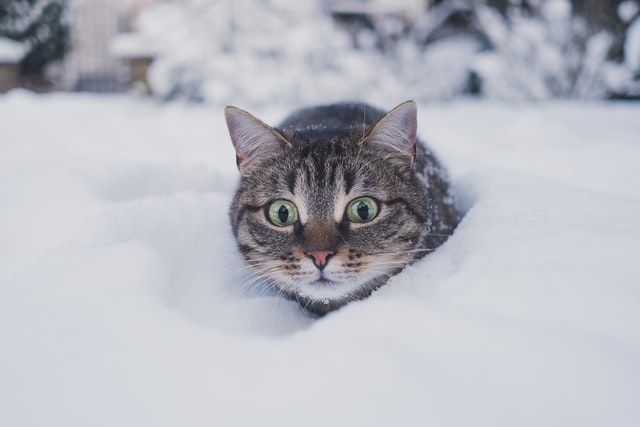Winter weather may be a little inconvenient, but it can also be nice. All we have to do is crank up the heat, put on a sweater and sit back and enjoy. Animals don’t quite have it that easy, and have to find ways to cope with winter weather, no matter how bad it may get. While we are always here helping our animals friends at the park stay safe and warm, animals in the wild aren’t as lucky. They have had to find interesting and effective ways to adapt to the cold and survive the winter.
Today we’re going to look at some of the ways animals have found to cope with inclimate weather.
Migration: Migration is a simple idea that involves leaving cold environments behind for warmer weather. People do this all the time, going on winter trips to warm destinations. For animals, this can be a survival tactic that not only helps them escape cold, but the harsh conditions that go along with winter, like reduced access to food. When animals migrate they wait out the cold and return seasonally, usually near spring time. Lots of animals do this, including fish and even insects!
Hibernation: Hibernating allows animals to reduce their need for resources during winter months when resources are more scarce. This not only allows them to wait out reductions in food and water sources, but avoid being out in harsh weather conditions looking for food. There are different types of hibernation, but it is not just the same as sleeping through the winter. Hibernation is when the metabolism slows down, which greatly reduces their bodily processes and need for calories. So while animals do tend to find a safe spot to hibernate, like a den, they aren’t simply sleeping away in the winter.
Seasonal adaptations: Animals have a remarkable ability to adapt to their environment, which includes seasonal adaptations for the cold. Sometimes this includes changing their appearance to be more suited to the cold weather, but it could include growing thicker fur or adding fat to act as insulation against the cold. A great example of this are animals that turn white to blend in with snow, like some types of hares and weasels.This makes it a lot harder for predators to find and catch them in the winter.
Even when an animal has less dramatic adaptations, they usually take precautions for the winter before the cold hits. For example, beavers and squirrels will create food caches to hide winter stores. So while they’re not hibernating or changing colors, they are well aware of the scarcity ahead, and work to protect themselves against it. This awareness and preparedness alone is a fascinating adaptation if you ask us!
Which cold-weather adaptation do you find the most amazing? Head over to our https://www.facebook.com/aggielandsafari/Facebook page and tell us about it and why!

